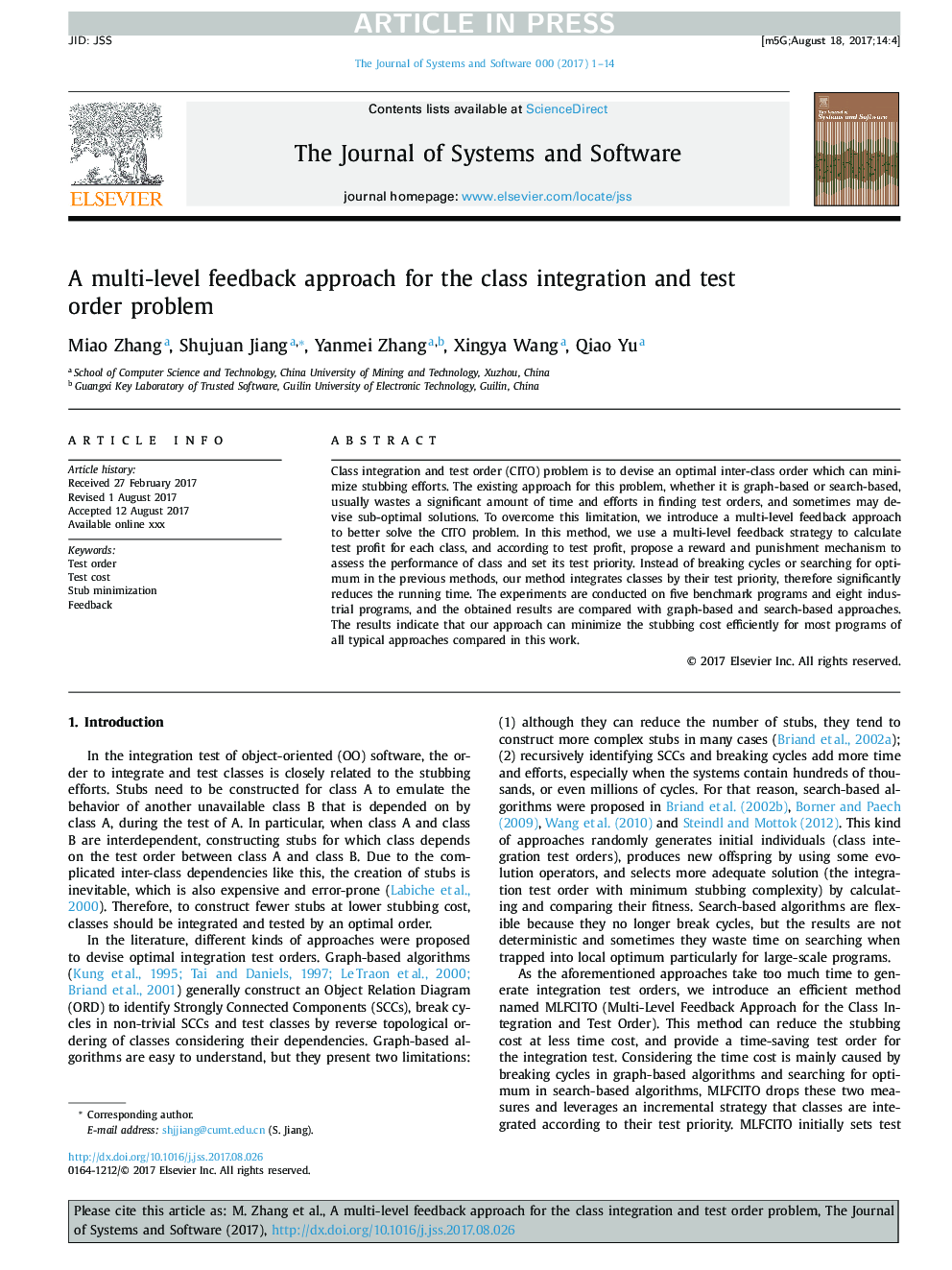| Article ID | Journal | Published Year | Pages | File Type |
|---|---|---|---|---|
| 4956361 | Journal of Systems and Software | 2017 | 14 Pages |
Abstract
Class integration and test order (CITO) problem is to devise an optimal inter-class order which can minimize stubbing efforts. The existing approach for this problem, whether it is graph-based or search-based, usually wastes a significant amount of time and efforts in finding test orders, and sometimes may devise sub-optimal solutions. To overcome this limitation, we introduce a multi-level feedback approach to better solve the CITO problem. In this method, we use a multi-level feedback strategy to calculate test profit for each class, and according to test profit, propose a reward and punishment mechanism to assess the performance of class and set its test priority. Instead of breaking cycles or searching for optimum in the previous methods, our method integrates classes by their test priority, therefore significantly reduces the running time. The experiments are conducted on five benchmark programs and eight industrial programs, and the obtained results are compared with graph-based and search-based approaches. The results indicate that our approach can minimize the stubbing cost efficiently for most programs of all typical approaches compared in this work.
Related Topics
Physical Sciences and Engineering
Computer Science
Computer Networks and Communications
Authors
Miao Zhang, Shujuan Jiang, Yanmei Zhang, Xingya Wang, Qiao Yu,
